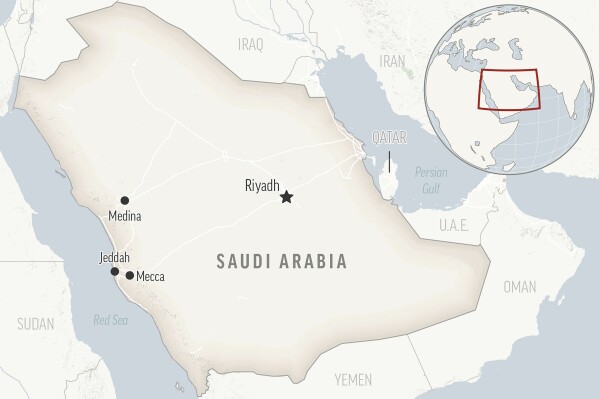Iran’s foreign minister visits Saudi Arabia on first such trip in years as tensions ease
DUBAI, United Arab Emirates (AP) — Iran’s foreign minister traveled to Saudi Arabia on Thursday, marking the first trip to the kingdom by Tehran’s top diplomat in years after the two nations reached a détente with Chinese mediation.
The visit by Hossein Amirabdollahian comes as both Saudi Arabia and Iran try to ease tensions between their nations, which long have viewed each other as archrivals for influence across the wider Middle East. Challenges remain, however, particularly over Iran’s advancing nuclear program, the Saudi-led war in Yemen and security across region’s waterways.
Amirabdollahian’s trip to Riyadh comes as the two nations are reopening diplomatic missions in each others’ countries. He was accompanied by Alireza Enayati, Iran’s new ambassador to the kingdom.
The last Iranian foreign minister to visit Saudi Arabia on a public trip was Mohammad Javad Zarif, who traveled to the kingdom in 2015 to offer condolences for the death of King Abdullah.
 Saudi Arabia says it executes American citizen convicted of killing his father
Saudi Arabia says it executes American citizen convicted of killing his father
 Saudi Arabia-owned Newcastle to host two friendlies for kingdom’s national team ahead of Asian Cup
Saudi Arabia-owned Newcastle to host two friendlies for kingdom’s national team ahead of Asian Cup
 Saudi oil giant Aramco reports $30B in profits, down nearly 40% from last year due to lower prices
Saudi oil giant Aramco reports $30B in profits, down nearly 40% from last year due to lower prices
The kingdom broke ties with Iran in 2016 after protesters invaded Saudi diplomatic posts there. Saudi Arabia had executed a prominent Shiite cleric with 46 others days earlier, triggering the demonstrations.
That came as Crown Prince Mohammed bin Salman, then a deputy, began his rise to power. The son of King Salman, Prince Mohammed previously compared Iran’s Supreme Leader Ayatollah Ali Khamenei to Nazi Germany’s Adolf Hitler, and threatened to strike Iran.
Since then, the U.S. unilaterally withdrew from Iran’s nuclear deal with world powers in 2018. Iran has been blamed for a series of attacks after that, including one targeting the heart of Saudi Arabia’s oil industry in 2019, temporarily halving the kingdom’s crude production.
Religion also plays a key role in tensions as well. Saudi Arabia, home to the cube-shaped Kaaba that Muslims pray toward five times a day, has portrayed itself as the world’s leading Sunni nation. Iran’s theocracy, meanwhile, views itself as the protector of Islam’s Shiite minority.
But after the coronavirus pandemic and the U.S.’ chaotic withdrawal from Afghanistan, Gulf Arab nations including Saudi Arabia have begun reassessing how to manage relations with Iran. In March, the kingdom and Iran reached an agreement with Chinese mediation to reopen embassies.
The war in Yemen continues, though Saudi-led strikes have dropped dramatically amid its efforts to withdraw from the conflict, which has seen the Iranian-backed Houthi rebels maintain their yearslong hold on the capital, Sanaa.
___
Associated Press writer Amir Vahdat in Tehran, Iran, contributed to this report.
Disclaimer: The copyright of this article belongs to the original author. Reposting this article is solely for the purpose of information dissemination and does not constitute any investment advice. If there is any infringement, please contact us immediately. We will make corrections or deletions as necessary. Thank you.






